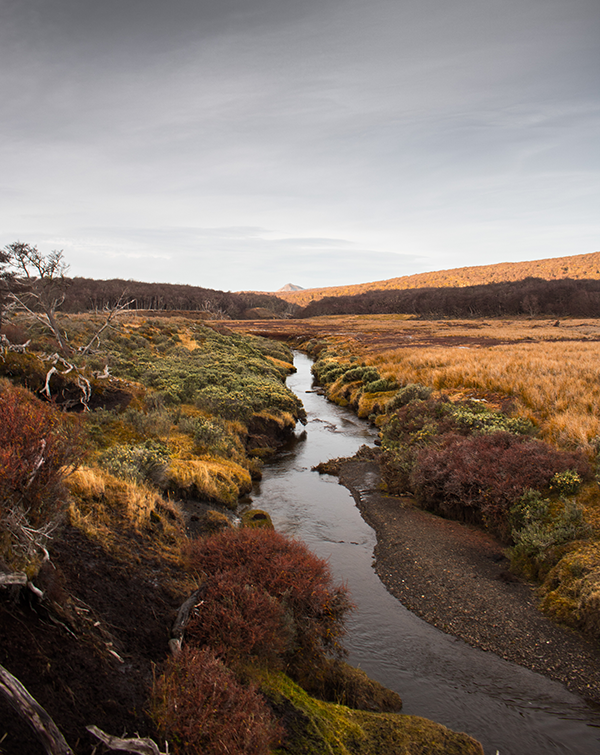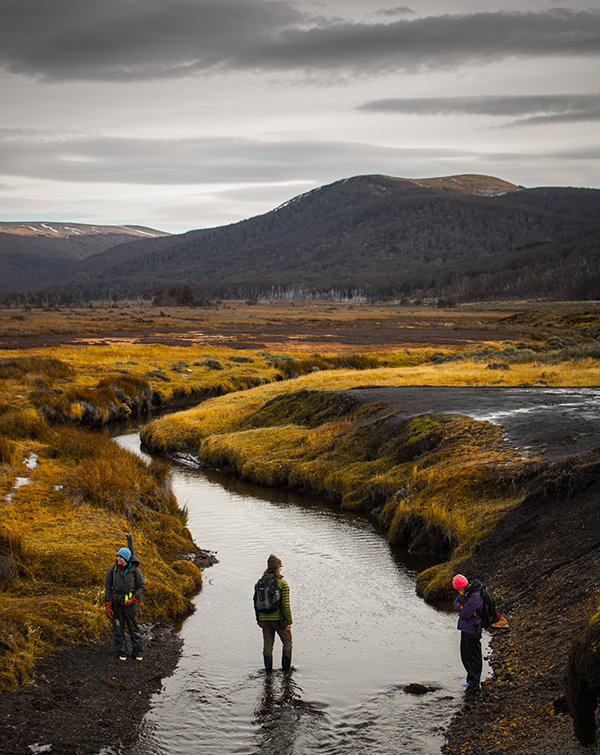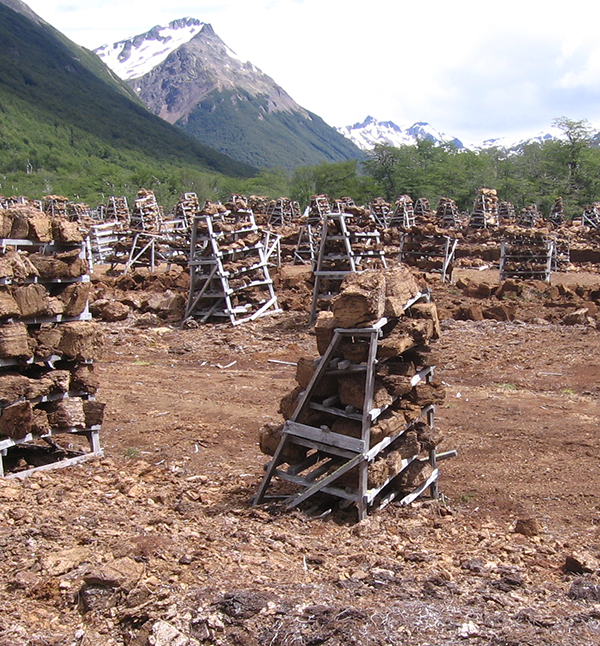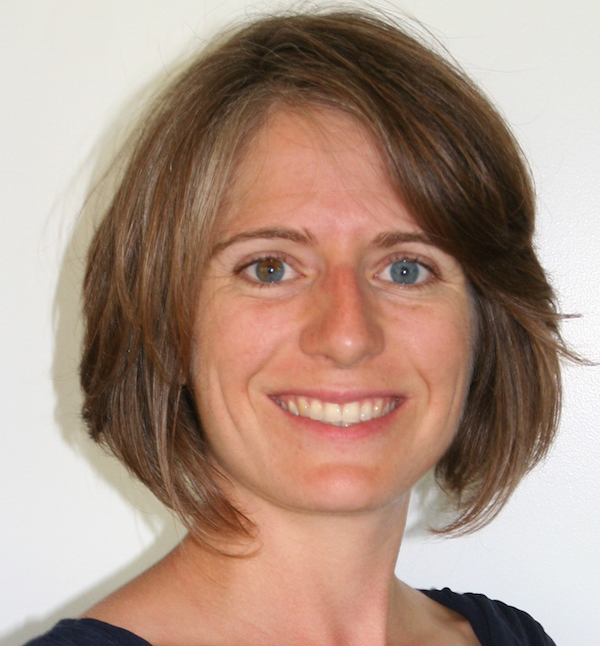Carbon-Loaded Peatlands Can’t Be Ignored, Texas A&M Scientist Says
Led by Texas A&M’s Dr. Julie Loisel and the University of Exeter, scientists from over 50 institutions agree: peatland carbon stocks are more vulnerable than previously thought, and preserving peatlands is essential to limiting climate warming.
Dec 7, 2020

Peatlands in Tierra del Fuego. (Photo by Patrick Campbell.)

Peatlands occupy 3% of the global land area, but contain about 25% of the global soil carbon stock — equivalent to twice the amount in the world’s forests. And, experts say that huge amount of carbon is not as secure as scientists once thought.
This is cause for major concern, says Dr. Julie Loisel, assistant professor in the Department of Geography at Texas A&M. Today she and a multidisciplinary team of 69 scientists from around the globe published a paper with a clear message: peatlands hold an enormous amount of carbon, are not as stable as previously thought, and must be fully accounted for in Earth system models.
In fact, the scientists predict that the carbon balance of peatlands will shift from a sink to a source this century.
“That means that instead of absorbing carbon from the atmosphere, peatlands will instead release carbon and exacerbate climate warming, in a positive feedback loop,” said Loisel.
The study warns that more than 100 billion tons of carbon could be released from peatlands by 2100, primarily because of anthropogenic impacts in tropical peatlands. That said, the authors stress this estimate is highly uncertain — ranging from a carbon gain of 103 billion tons and a loss of 360 billion tons — but it highlights the need for improved peatland management and peatland integration in models, which would also help constrain estimates in the future.
Titled “Expert assessment of future vulnerability of the global peatland carbon sink,” and published in Nature Climate Change today, the paper combines existing research with survey estimates from 44 leading peatland experts. The authors also agreed that peatland science is a critical research area that needs further support to fully understand the peatland-carbon-climate nexus.
What Are Peatlands, And Why Should We Preserve Them?
Peatlands store large quantities of carbon within their thick soil layers over thousands of years, which causes them to act as a cooling climate agent on a global scale, Loisel said. This large and dense carbon store is the result of the slow process of belowground peat accumulation under saturated conditions that has occurred over millennia.
“The carbon is preserved in peat because it’s cold and/or wet,” she said. “The last thing we want is for this carbon to be quickly released back to the atmosphere, or go up in smoke.”
Recent large peat wildfires in Indonesia and Russia, to only name a couple, have made the news over the past few years because they can release as much carbon in a few months as total human carbon dioxide emissions in a year.

Peat blocks cut up and drying on racks, in Tierra del Fuego. (Photo by Loisel.)

In addition to wildfires, climate change impacts such as permafrost degradation, rising temperature, drought, and sea level rise are causing many peatlands to emit carbon. And, peatland destruction caused by land-use change also poses a critical threat.
“That’s where we can collectively make a difference,” Loisel said. “We have a responsibility to stop the destruction of peatlands and find sustainable practices.” Lessons must be learned from places like Indonesia, where most peatlands have been destroyed and converted to palm oil plantations, according to the researchers. Achieving a balance between wise peatland use and economic needs has shown difficult, but they hope that their study highlights the need to protect the world’s peatlands with effective policies.
“We must avoid making the same mistakes in the Amazon and the Congo basins, where large peatlands were recently discovered,” she said.
Improving Earth System Models
Atmospheric carbon dioxide emissions associated with degraded peatlands account for 5-10% of the global annual anthropogenic carbon dioxide emissions, despite their small geographic footprint, the researchers said.
Yet, peatland ecosystems have not been integrated into the main Earth System Models used for future climate change projections and they are not considered in Integrated Assessment Models used in impact and mitigation studies, according to the researchers.
“Including peatlands into assessment models that project future socio-economic change and carbon emission pathways could help develop incentives such as peatland carbon pricing and sustainable practices, and change the way these ecosystems are valued and managed,” Loisel said.
As for their inclusion in Earth System Models, the team believes they have been neglected thus far because they are not perceived as large players in the carbon cycle on a year-to-year basis, and also because they are not particularly dynamic when undisturbed. “But this is changing now, with the increase in wildfires, permafrost thaw, drought, sea level rise, and rapid conversion to agricultural land,” she explained.
To address this systemic problem, a group of 20 peatland scientists from around the world gathered at Texas A&M in 2018 for a 3-day workshop, which eventually resulted in this study.
“This is where the idea of surveying our colleagues about the role of each agent of change on the future of peatland carbon came to be,” Loisel said. The researchers concluded that the inclusion of peatland process understanding in models, and particularly better attribution of the role of each agent of change on peatland carbon dynamics, would help emphasize which processes are most important, thereby increasing confidence in carbon flux predictions.
“Our research group is called C-PEAT and is composed of over 200 peatland scientists. A subset of us meets annually, virtually or in person, to discuss the most pressing research questions that our community faces. We have members from everywhere on the planet.”
Loisel has served as the co-lead of C-PEAT since 2018, alongside Dr. Angela Gallego-Sala of the University of Exeter.
By Leslie Lee, Texas A&M College of Geosciences

